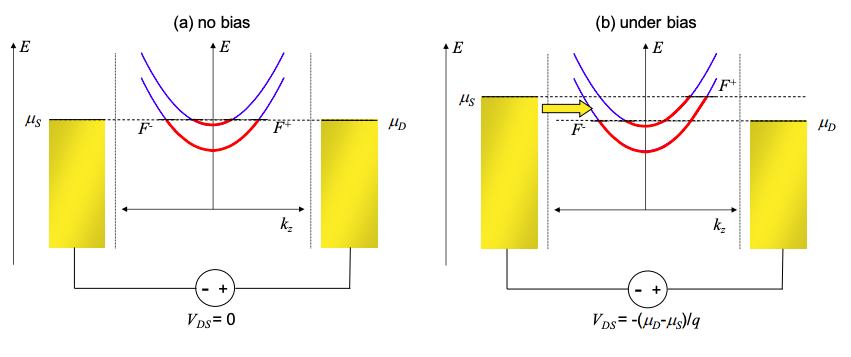4.4: Bias
- Page ID
- 50032
Now, what happens when a voltage is applied between the contacts? Recall that applying voltage shifts the relative potential energies of each contact, i.e. \(\mu_{D}-\mu_{S} = -qV_{DS}\), where the chemical potential of the source is \(\mu_{S}\) and the chemical potential of the drain is \(\mu_{D}\).
As in the equilibrium case, charges flow from each contact, ballistically through the conductor and into the other contact. Thus, all states with \(k_{z} > 0\) are injected by the source and have no relation with the drain. Similarly, electrons with \(k_{z} < 0\) are injected by drain.
But now the injected currents do not balance. Conductor states in the energy range between \(\mu_{S}\) and \(\mu_{D}\) are uncompensated and only be filled by the source, yielding an electron current flowing from source to drain in Figure 4.4.1.
The quasi Fermi level for electrons with \(k_{z} > 0\), \(F^{+}\) must equal the electrochemical potential of the left contact, i.e.
\[ F^{+}=\mu_{S} . \nonumber \]
Similarly,
\[ F^{-}=\mu_{D} \nonumber \]
Thus, current can only flow when there is a difference between the chemical potentials of the contacts. This shouldn't be surprising, since the difference between chemical potentials is simply related to the voltage by \(\mu_{D}-\mu_{S} =-qV_{DS}\).



